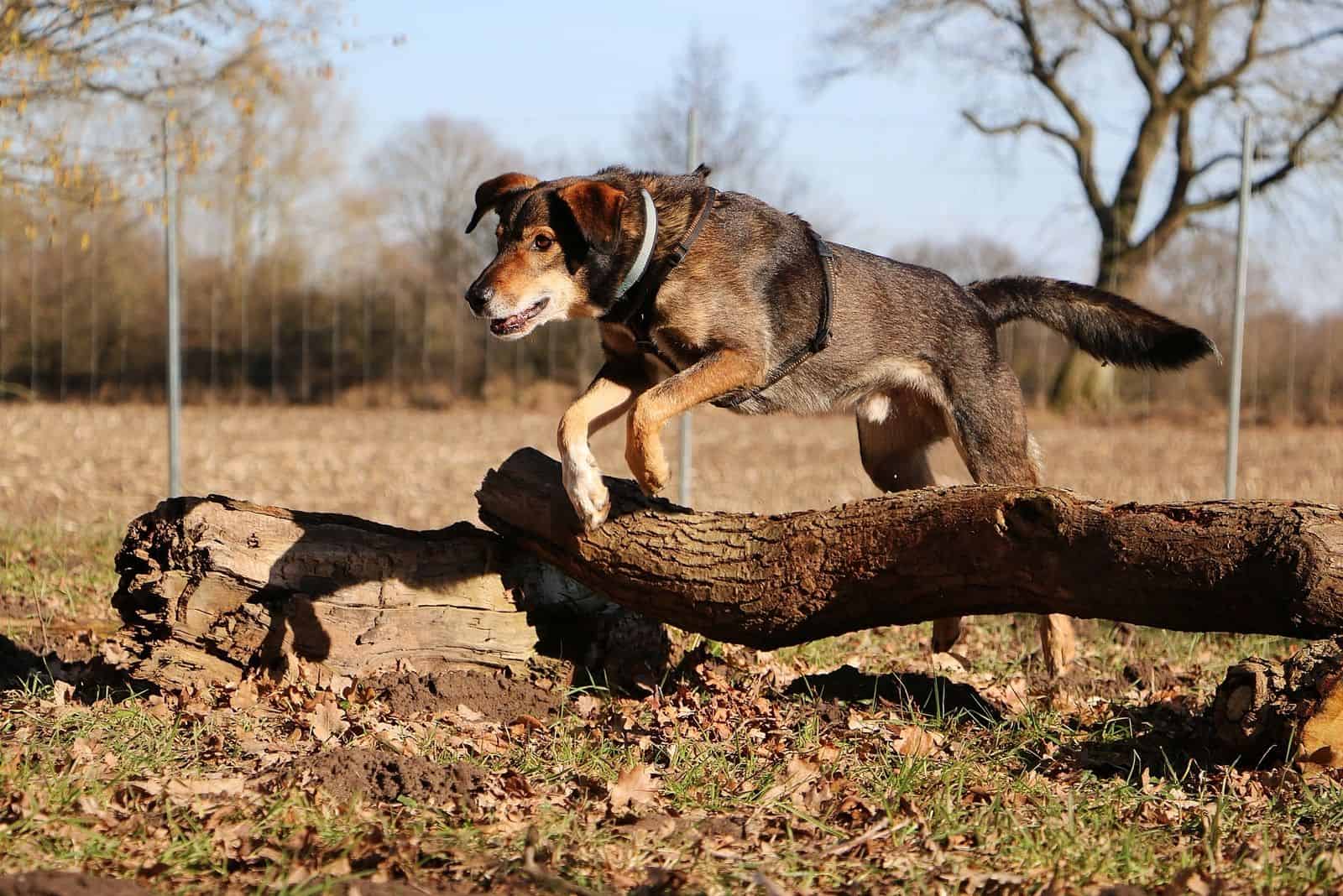Mixed-breed dogs are causing a stir at the moment. Though many people are in favor, there is a lot of opposition from those who are concerned about the sudden boom in designer dogs.
Some of these worries are related to the health problems that could be passed on to mixed-breed puppies. Others are more anxious that traditional breeds may become extinct if everyone is producing crossbreeds.
To this last group, hybrids or mixed-breed dogs are nothing more than mutts, which is not particularly fair on the dogs themselves. However, mutts are generally thought of as the offspring of two dogs that are not purebred themselves, and whose parents were probably mutts as well!
There’s a good chance that you fall into the category of people who are comfortable with the idea of mixed breeds, and you want to know more about this curious mix of the Belgian Malinois and the Labrador Retriever.
If so, you’re in the perfect place! As we work our way through the facts and information, we’ll dig a little deeper into the world of dog breeding to try to understand both sides of the designer dog story.
Many mixed breeds are relatively new to the scene, making it difficult to find specific information about them.
Hopefully, this will change in time, but in the meantime, we can study the two parent breeds that contribute to the Belgian Malinois Lab mix to give us an idea of what to expect.
The Belgian Malinois
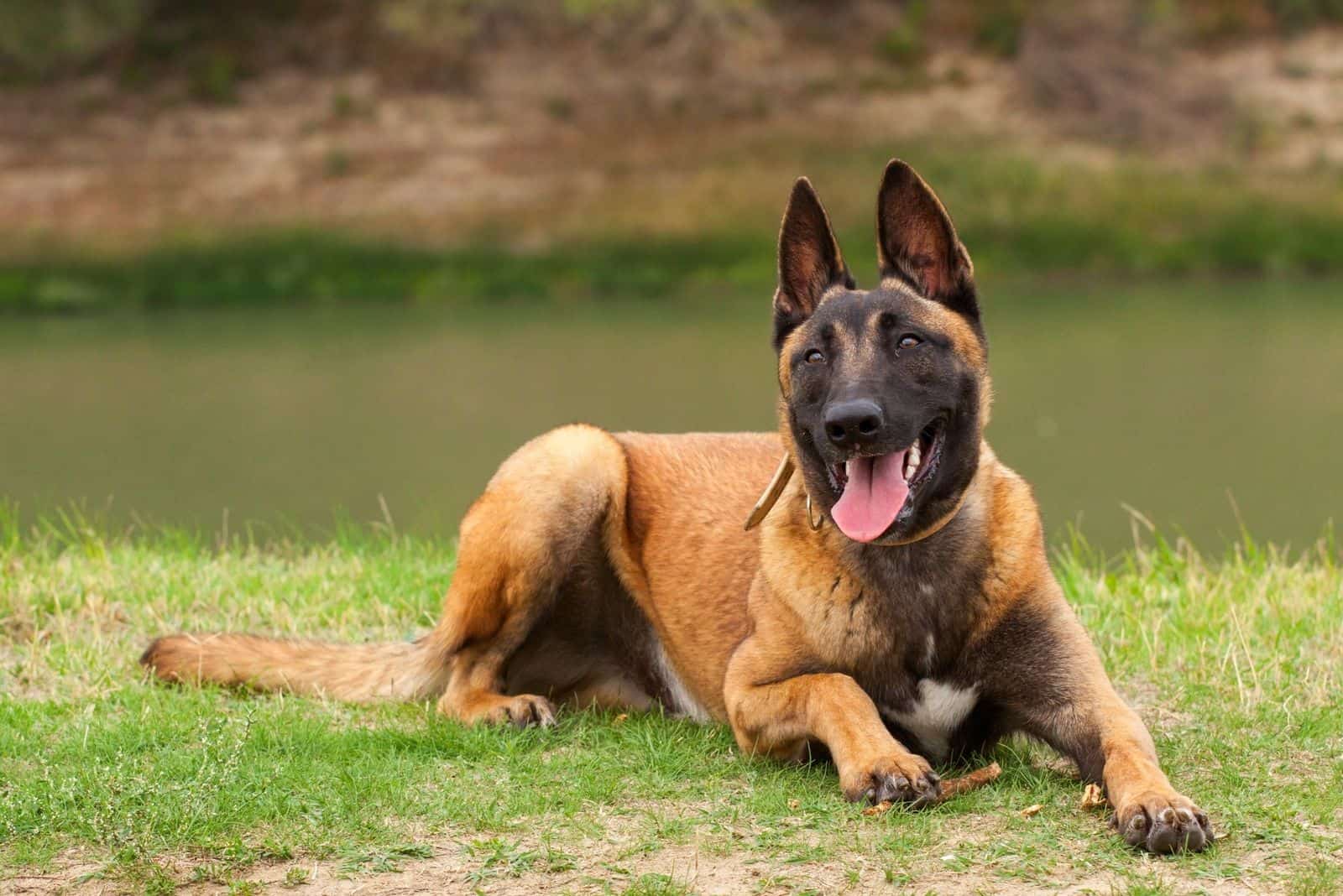
This isn’t a well-known breed by any means. Those who are familiar with them will know them to be intelligent, powerful dogs, similar in appearance to the Dutch Shepherd and German Shepherd, although they are not related.
They are one of the four Belgian Sheepdogs, including the Tervuren, Groenendael (aka Belgian Shepherd dog), and Laekenois. These were originally seen as one breed until late in the 19th century when interbreeding between them was banned and the four separate breeds were established.
The Malinois takes its name from the Maline region of Belgium, where shepherds preferred their coat type.
They are medium-sized to large dogs, weighing between 40 and 80 pounds, with males being heavier than females.
In height, they measure between 22 and 26 inches, again with females being smaller.
This dog’s natural intelligence and alertness make him highly trainable. As they are rarely used as herding dogs these days, their skills are often put to good use as guard dogs, K-9 unit police dogs, security service dogs, sniffer dogs (for explosives, drugs, or gas detection), therapy dogs, search and rescue dogs, and a whole range of other amazing roles.
The Mal lives to please its owner. You are the center of his world. The worst punishment you could inflict upon him is to exclude him from your daily life and put him in a yard or kennel.
You’ll soon get to know that eager face, and those eyes that are always alert, waiting for your next command. This is a dog that needs to be kept busy. He also needs a firm hand. Harsh words won’t work, but you must be assertive and start obedience training and socialization straight away.
Because he wants to please you, he’ll be extremely protective. Any aggression will vary with each dog, but most will naturally be protective and territorial of their home and family.
Herding is also second nature, so he’ll want to round up small animals or kids, nipping at their heels as he goes. Obedience training is your ticket out of this scenario, and it is especially important if you have young children at home.
The Belgian Malinois has a short, straight coat, with a thick undercoat that sheds twice a year. Brushing them a couple of times a week will make it manageable, but during the shedding seasons, you’ll have to brush them every day.
Finally, they have a lifespan of between 10 and 14 years, which is about right for their size.
Are Belgian Malinois Good Family Dogs?
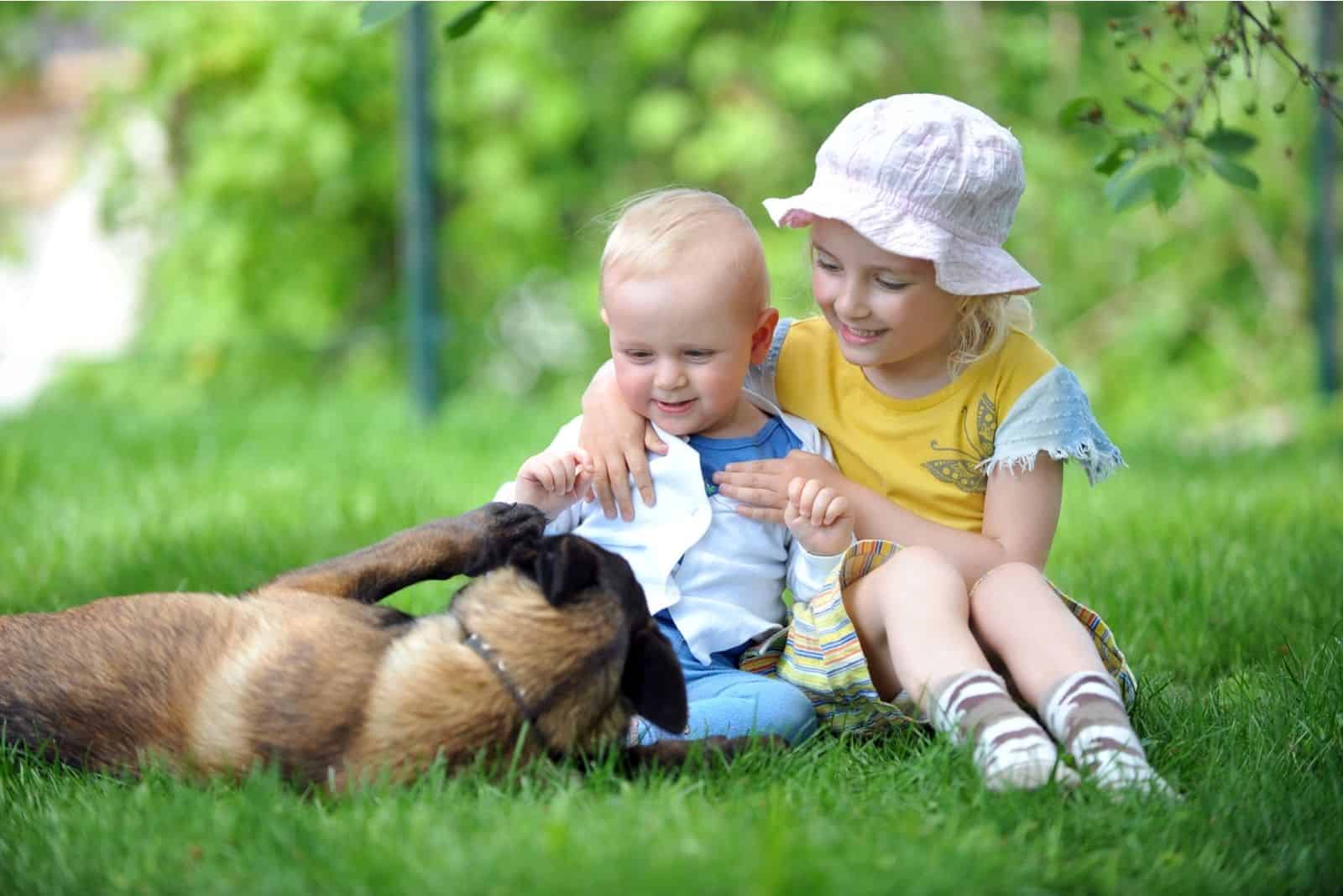
As always, the answer to this is, yes, for the right family!
These dogs love to be active, so they would suit a sporty family who loves the outdoor life. Hiking, walking, jogging, swimming, whatever your pursuit, they’ll be there at your side.
It’s best if you don’t have other pets around as they’re not keen on sharing, although socialization can help with this problem.
They are very intelligent and obedient dogs, so training is your best friend here. This dog really wants to please you, which goes in your favor.
One major fact about Mals is that they are family-oriented, and they don’t like to be left alone. You should rarely, if ever, leave them home alone for more than four hours as they quickly become bored and will suffer from separation anxiety.
Read More: Belgian Malinois Training
Are Belgian Malinois Considered An Aggressive breed?
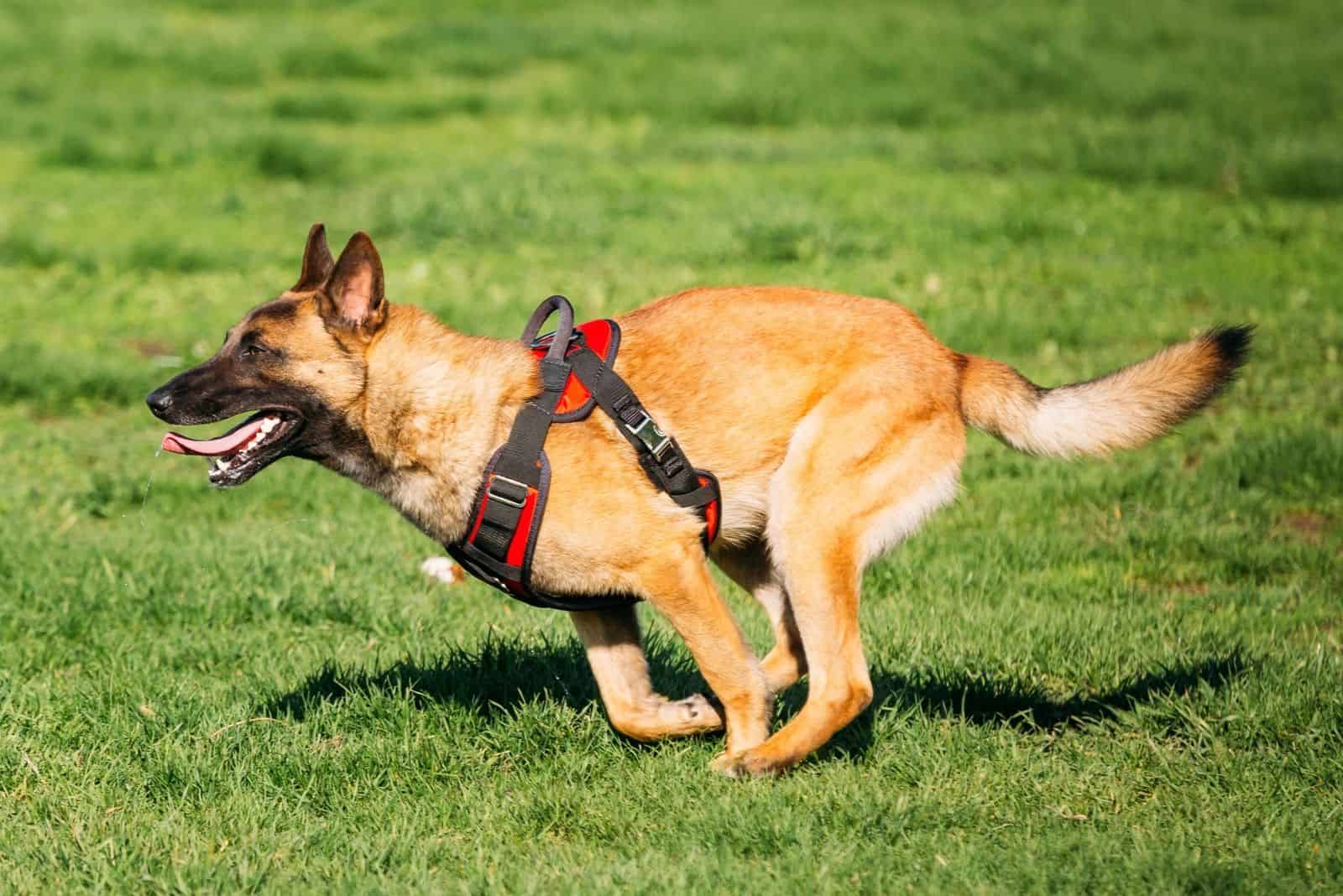
Some people may say so.
There are several reasons why any dog might be aggressive at times; for example, when they’re sick or in pain, when they’re anxious or fearful, or when they’re threatened. Tragically, other causes of aggression occur when the dog has been deliberately raised to be so for the despicable ‘sport’ of dogfighting, or if it has been abused and neglected.
Is the Belgian Malinois any more or less aggressive than other breeds? Well, they appear on lists of the world’s most dangerous dogs, along with the Pitbull and the Siberian Husky, so it must be true, right?
Actually, no.
First, many of these lists are published on clickbait-funded websites without a shred of credibility or scientific knowledge.
Second, there are problems with the statistics used in some of these lists. For example, would you believe that the Labrador appears on this list, too?
You see, the Labrador Retriever is the number one dog in the USA, so there are more of them around. This makes it statistically more likely that biting incidents will occur, but the circumstances won’t be known.
Do we know whether the dog was in pain, threatened, sick, or anxious? Many of these incidents involve children. Were they being supervised? Had they upset or hurt the dog in some way, even if accidentally?
Would you say that the Labrador is a naturally aggressive dog?
There are just too many variables at play to arbitrarily label many dogs as aggressive or dangerous.
The Mal is protective, just like many other dog breeds. It can display aggressive behavior depending on the circumstances. It is known to be mouthy, an instinct left over from its herding days. This instinct can be aroused suddenly if something moves by the dog’s head too quickly.
But, with proper socialization and training, this can be mostly resolved. It’s also wise to supervise children and educate them as to how to behave around dogs. As usual, it’s humans, not dogs, who are responsible for this.
The Labrador Retriever
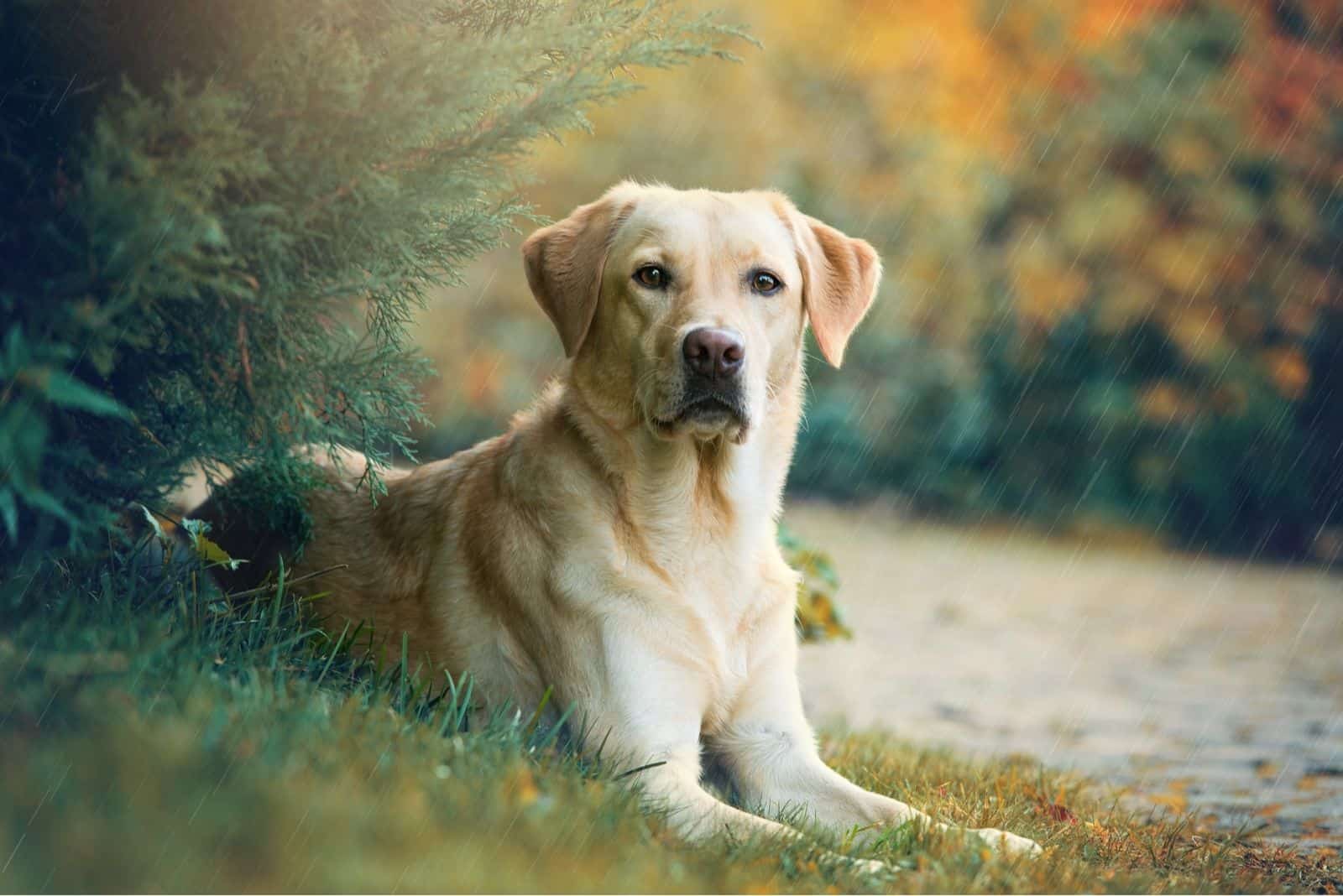
Now, we come to the other parent breed, the trusty Lab. As we saw earlier, it’s America’s favorite breed and has been for some time.
They were originally bred as working dogs, retrieving ducks and fish from the water for hunters and fishermen.
These early examples were taken to the United Kingdom where they were developed as gundogs for shooting estates.
As they weren’t usually used for hunting live animals, they have a naturally low prey drive, which makes them safe around small pets. However, don’t be surprised if they take off after the odd squirrel once in a while! This could be due to their playfulness as much as anything else.
Labs weigh somewhere between 55 and 80 pounds, with females at the lower end of the scale. They measure between 21.5 and 24.5 inches at the shoulder, again with males being taller.
When you take a peek at the American Kennel Club (AKC) listing for the Labrador Retriever, you can see why dog lovers have taken this particular pooch to heart. They are classed as lovey-dovey in terms of affection towards family.
They have the highest rating when it comes to being good with kids and other dogs. They are enthusiastically playful, and they consider everyone their best friend. And, to finish off, they are highly trainable and very adaptable.
Who could want more from their furry friend?
Don’t mistake their laid-back nature for laziness, though. They have infectious energy and will happily run, swim, or play for hours. This is as important for their mental wellbeing as it is for their physical fitness, so be sure to take them for long walks in interesting places.
Visit the dog park to let them make new friends. Set a regular playtime session with them in the yard or garden, and watch that ‘otter tail’ wag with delight.
The Labrador Retriever has a short, double coat that requires regular brushing unless you want your house covered in loose hair. The coat comes in three colors: black, yellow, and chocolate, with or without white markings.
Obesity can be a serious issue with Labs, especially in old age, as the dog is less inclined to exercise and becomes less active.
Most owners don’t take this into account and continue feeding their beloved pet the same amount, which makes them pile on weight. This puts extra pressure on their joints and on their vascular system, leading to further health problems that can shorten the dog’s life.
Officially, the Labrador has a lifespan of between 10 and 12 years, but with the right care, many beat this by several years.
So, what does all this mean for the main focus of our study, the Belgian Malinois Lab mix?
The Belgian Malinois Lab Mix
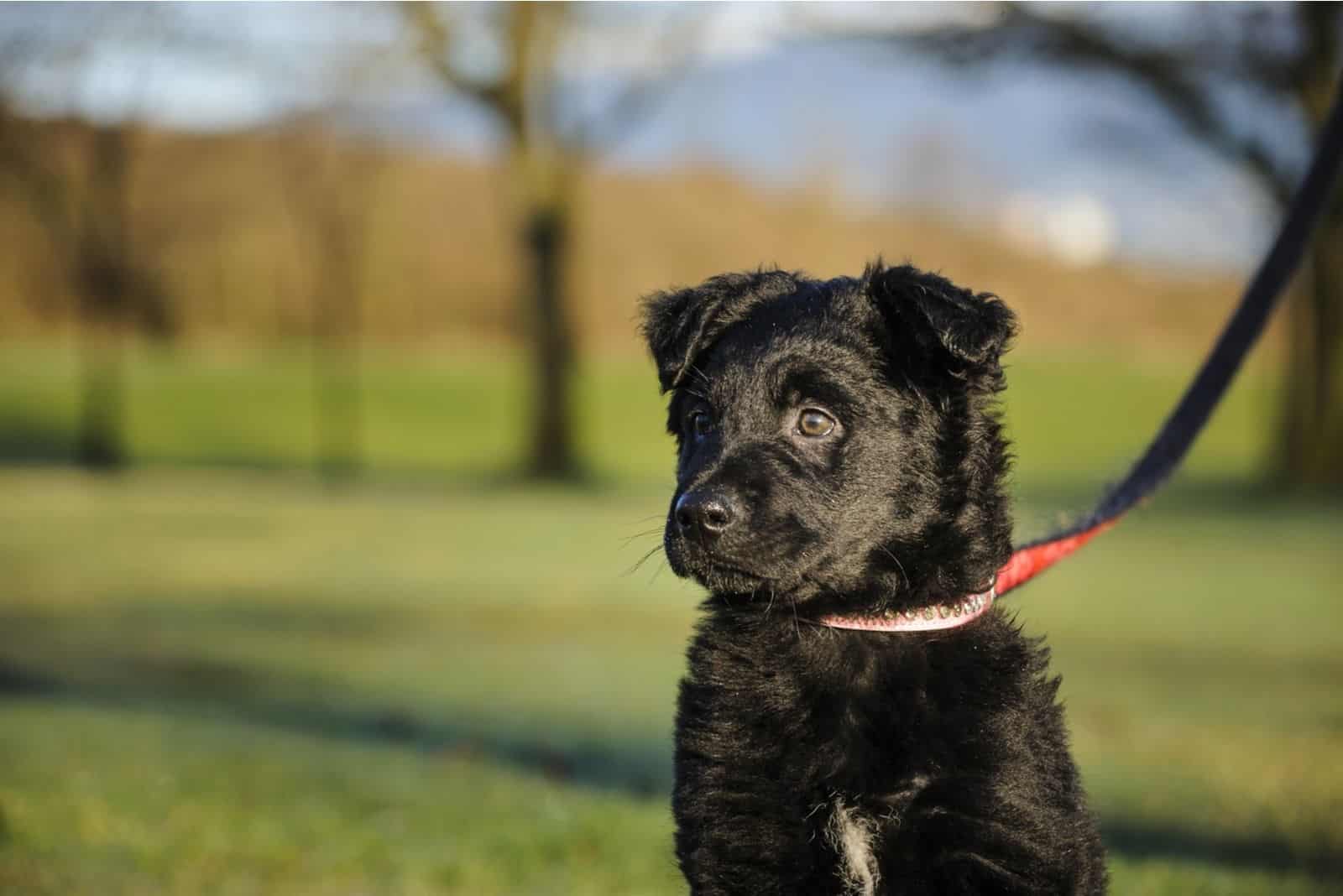
Most new designer dogs have several quirky names, usually a combination of the two breeds that created it. This has resulted in such wonders as the Goldendoodle, the Belusky, the Pomsky, the Frug, the Corgle – you get the picture!
Some are more enigmatic, such as the Malinois X, a cross between a Mal and a German Shepherd.
Strangely enough, our Labrador Belgian Malinois mix doesn’t seem to have any other name yet, possibly because it’s so new. Perhaps you could think of one? Something along the lines of Labinois, or Belgidor?
Anyway… on to more important things! What is the Belgian Malinois Lab mix like?
The thing about mixed-breeds, especially new ones, is that there isn’t a lot of information about them. What we can say is that purebred dogs are (or were) often produced for a specific reason, such as hunting or herding.
When you cross two breeds, these instincts are usually reduced. This is helpful in many cases, especially in highly driven working dogs, such as the Border Collie or the Mal.
A good, reliable breeder can produce beautiful-looking, healthy mixed-breed puppies that have the best qualities of the parents without being too much of a challenge for dog owners.
The Belgian Malinois Lab mix is likely to fall into this category – if you can find a reputable breeder who is selling them!
Let’s find out more about these wonderful dogs…
The Belgian Malinois Lab Mix Temperament
Photo from: @leven_met_luna
For example, a Boxer Belgian Malinois mix will be very different from a Belgian Malinois Greyhound mix or a Mal Golden Retriever mix. Each breed has something to contribute in terms of size, shape, color, and personality.
In general, the Belgian Malinois Lab mix will be a happy, playful dog, displaying puppy-like behavior well into her 5th year. It’s highly likely that she’ll be very energetic, and will prefer to be active rather than a couch potato!
This means that she’ll need a lot of exercise to cope with her high energy level as well as plenty of mental stimulation to keep her happy.
The tendency of the Mal to single out one family member for affection will be balanced by the Lab’s love for everyone, and this dog will be happy to cuddle.
She’ll be good with kids, especially when they are raised together with them, but, as always, socialization at an early age is a good idea. This will also help to curb her prey drive, although this will probably be low because of the
Labrador’s influence.
Obedience training (using positive reinforcement) is essential, and must begin as early as possible. She will also enjoy agility classes and anything to keep her active.
Without question, she will be loyal and devoted to you, and will be a protective watchdog and a wonderful family pet.
The Belgian Malinois Lab Mix Size
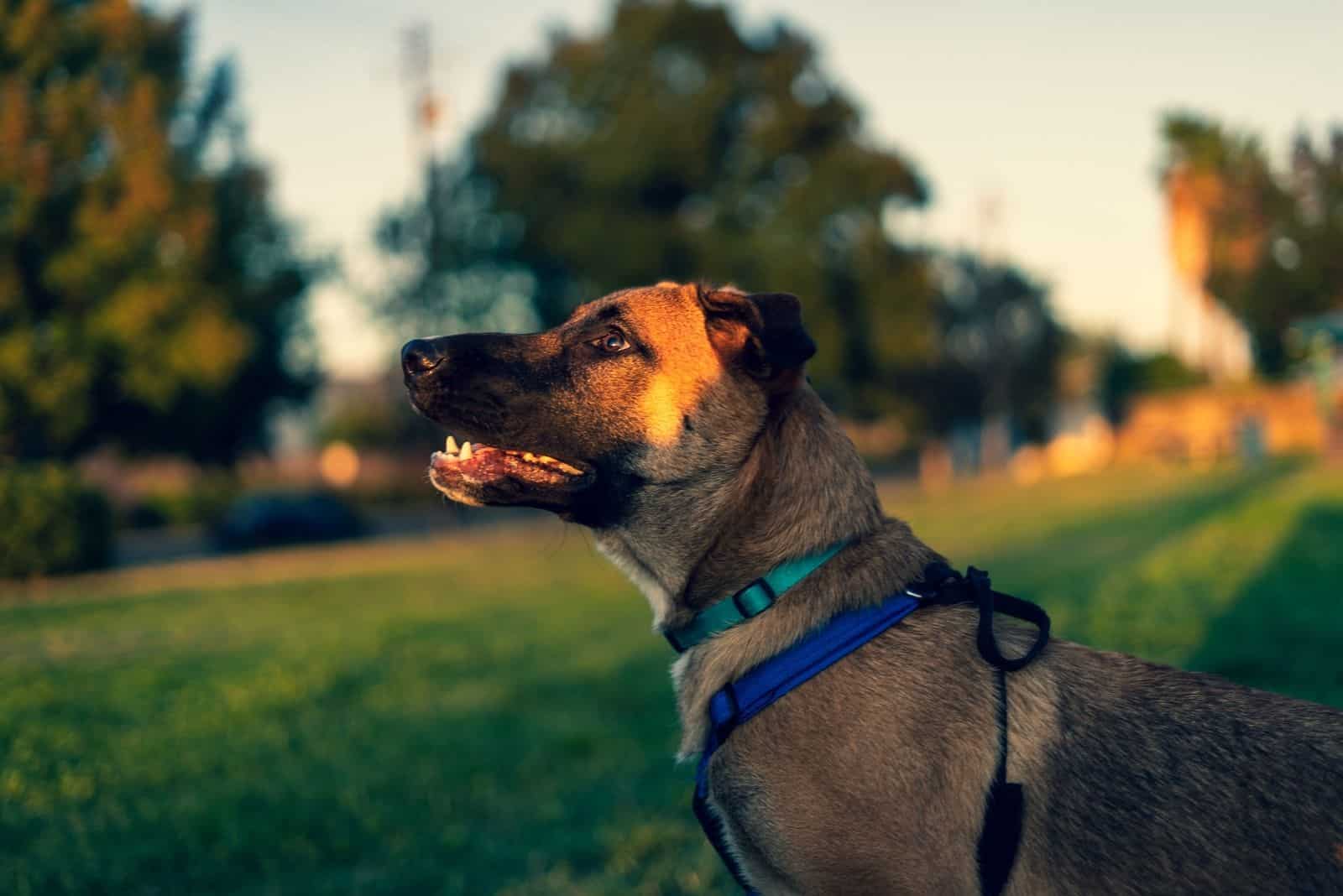
This is probably going to grow into a fairly big dog, taking after the larger-sized Labrador. You’ll be looking at a dog weighing between 60 and 80 pounds, although the dominant genes passed onto the pup will determine how big they will eventually grow. Male dogs will be at the larger end of the scale.
Not only will your dog be big, but it will also be strong. There are two implications here: the bigger the dog, the more it needs to eat. And, the stronger it is, the harder it will be for you to handle.
This means that you will be spending more on dog food than if you owned, say, a Spaniel or a Shih Tzu. Your Belgian Malinois Lab mix will need all that food to stay healthy and feed those energy levels.
Don’t be tempted to skimp on food by getting the cheapest food possible in order to save you some cash. Then again, don’t fall into the trap of thinking that expensive equals best.
Do some research and find the most nutritious dog food at a reasonable price.
The other issue is controlling your dog. You may think that you’re strong enough to hold back an 80-pound dog, but a single-minded pooch that has its focus set on something can be astonishingly powerful when it wants to be!
This is yet another reason why obedience training is so vital to the success of your relationship. A firm command should be enough to snap their attention back to you and stop unwanted behavior. This isn’t just a matter of convenience: it might just save their life.
Belgian Malinois Lab Mix Puppy

When you go in search of your pup, there’s really one rule to remember – don’t buy from puppy mills, pet stores, or backyard breeders!
It isn’t just about the fact that they are often unscrupulous and keep their dogs in crowded, dirty, and unsafe conditions. It isn’t only about them charging way too much at times.
What’s more important from your perspective is that they don’t have the knowledge, experience, or ethical outlook of reputable breeders. Their pups will most likely be sickly and weak. They will probably have genetic health conditions that won’t become apparent until the pup has matured, by which time it’s too late to do anything.
In addition, these untrustworthy sources may not use purebred dogs in the first place. Your pup could inherit undesirable traits that make them unpredictable and even dangerous.
A Belgian Malinois Lab mix puppy from a good breeder will be adorable, clean, healthy, and bright-eyed.
By the time it reaches your home, it will be between 8 and 12 weeks old. It will be a little furry bundle of fun, joy, and playful mischief. And, you need to be prepared for it. This means getting your home ready by making sure it’s a safe space for your new arrival.
There are many potential hazards in the home: cleaning materials containing toxic chemicals, electrical cables, choking hazards, staircases, pools, and ponds – all of these and more need to be assessed and made safe.
Your pup will need a lot of care and attention in the first few months, especially as they go through teething. They will probably need to be close by you all the time. Don’t leave them for too long if you need to go out, ideally no more than a couple of hours. You might find that they cry at night, so you may need to move their bed into your bedroom.
If you’re lucky, the breeder will have started the housetraining process. Even so, it’s now your responsibility to continue this.
To help them settle at night, don’t feed them too late, make sure they’ve been to the bathroom just before you put them to bed, and it’s a good idea to wear them out with playtime during the evening.
It’s also a great idea to start their grooming routine at this stage as it gets them used to it early on. This not only makes any visits to the vet easier as they’ll be okay with being handled, but it also helps you to strengthen the bond between you and your dog.
How Much Does A Belgian Malinois Lab Mix Cost?
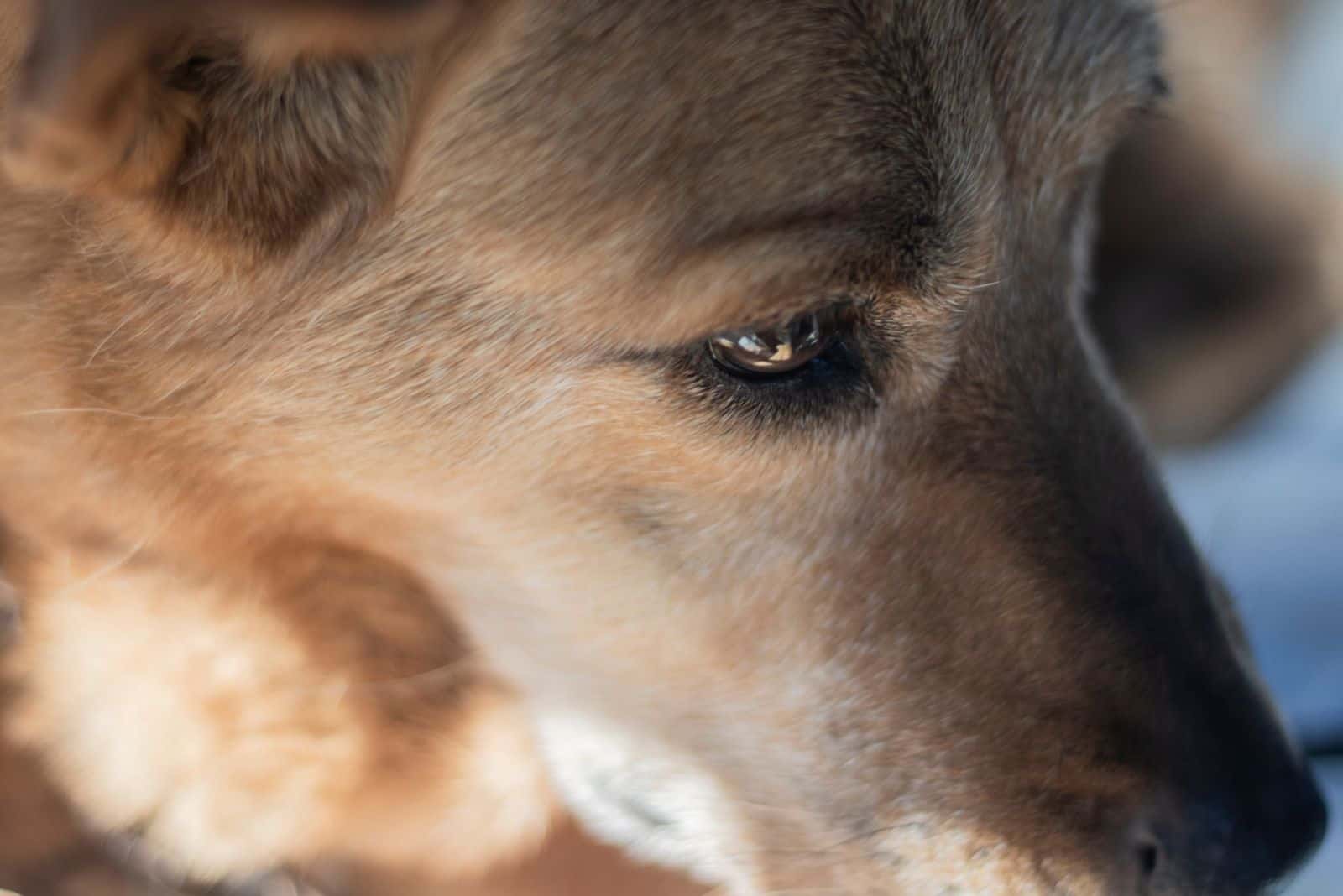
Pricing is hard to get a fix on as there aren’t many breeders who produce these dogs. However, from the information that’s available, you might expect to pay between $500 and $,1000 for your Belgian Malinois Lab mix puppy.
Be warned; there is a chance that you might have to pay a lot more as some breeders will use the fact that they are pretty rare as a reason to inflate their price.
To be fair, breeders often incur a loss on their litters, so it’s only to be expected that they will want to make a profit some of the time.
Of course, you could adopt from a shelter or a rescue facility, but you will have to wait until one of these dogs turns up. The beauty of adopting is that you pay a lot less, sometimes as little as $50 right up to around $500 depending on the shelter.
Some will ensure that the pup has its shots and is dewormed, while others will even have them spayed or neutered.
The main thing to remember is that the price of your dog is just the beginning. Budget wisely, and keep in mind that you now have the responsibility to care for your furry pal for the next decade or so. This will be a significant financial burden, costing between $1,400 and $4,300 per year.
What Health Issues Do They Have?
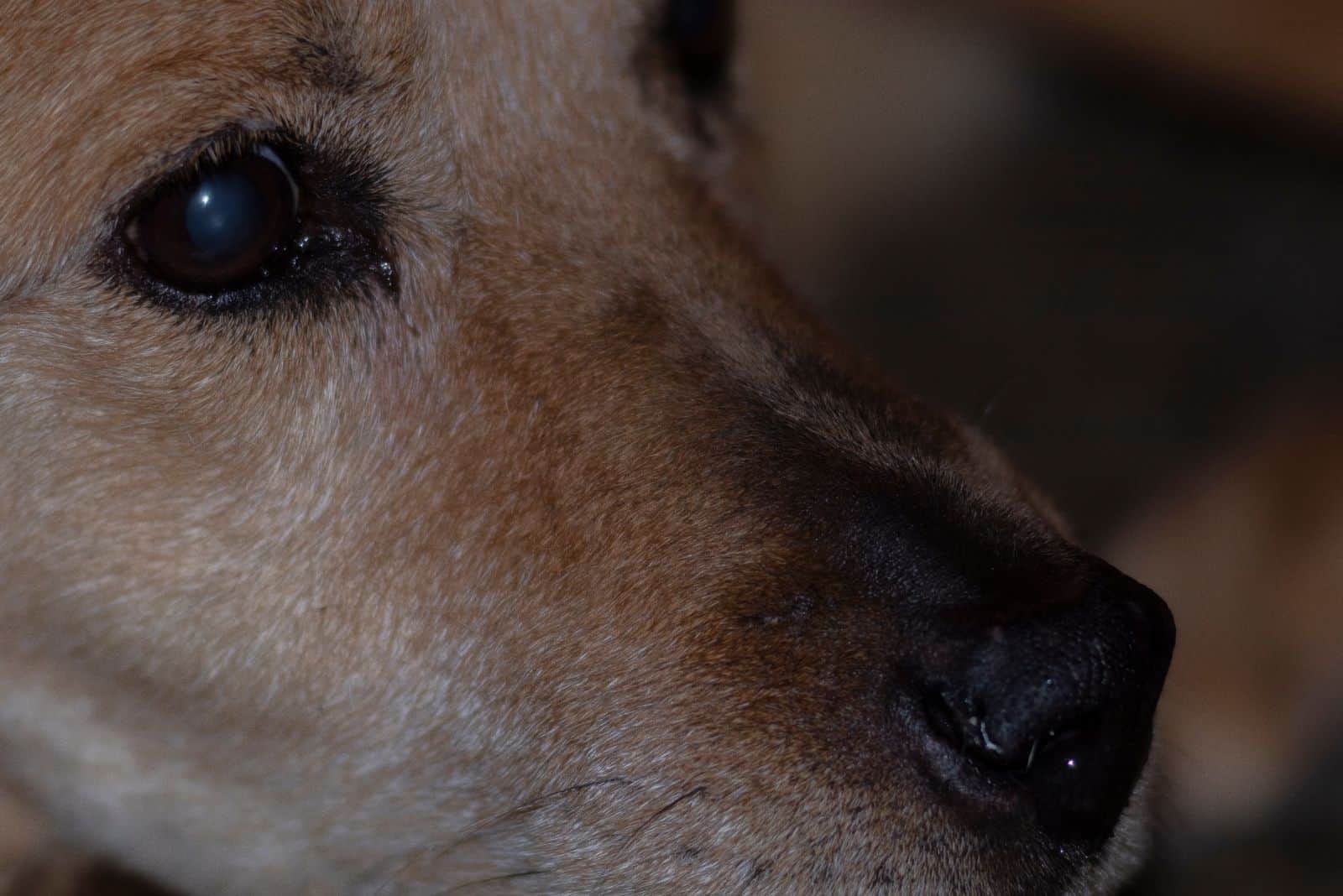
Just like all other dogs, this mixed breed will have a few health problems that might surface at times. To see which ones are more likely, we need to look at the parent breeds.
Common health issues with the Mal are elbow/hip dysplasia and eye problems. The Labrador Retriever mirrors this, but it also includes a potentially life-threatening condition called bloat as well as something known as exercise-induced collapse.
The ones that should cause alarm bells to ring are hip dysplasia and eye problems because they are inherited. If both parents have these, then it is likely that their pups will suffer from them, too.
This is why it is essential to buy your pup from a reputable breeder who will run health screening tests for these conditions.
The Last Word

Whatever your views are on mixed-breeds, whether you regard them as mutts or you believe that they’re the ethical way to go, the Belgian Malinois Lab mix is a fascinating and beautiful dog. And, while there may be question marks about the subject of designer dogs, it has to be said that, on balance, they can be healthier than many purebred dogs.
There is really just one rule when it comes to buying a designer dog: use a reputable breeder. Now, you might be sick of hearing this mantra, but it doesn’t make it any less true.
If we want dogs to become healthier, then we need to stop encouraging unethical breeders by keeping them in business.
So, have you decided that the Belgian Malinois Lab mix is the dog for you? The Mal is definitely a challenging dog that is not recommended for inexperienced dog owners. It has a reputation for biting and for being extremely driven.
Not many people can handle its independent streak coupled with its intensity. This is a dog that lives to work and to please its owner.
The Labrador, on the other hand, is a big softy that loves everyone and everything (well, nearly everything). It also has a lot of energy and thinks that life is all fun and adventure. It wants to please you just as much as the Mal does, and it is happy to work as long as it can settle down for a snuggle later.
The mix of these two is a winning combination as the intensity of the Mal is tempered by the laid-back nature of the Lab. It will be an active and intelligent dog; friendly, but watchful. It will protect you when necessary, but it will be happy to accept strangers and other animals.
Of course, each dog has its own personality and quirks that you’ll discover along the way. Most problematic behavior can be addressed through training and by getting your pup to meet as many other dogs, animals, and humans as it can while it’s still young.
If you follow the advice here, you can be sure that your journey together will be a long, happy, and rewarding one.
Read Next:
• Belgian Malinois Husky Mix: A Glimpse Of The Amazing Belusky
• The Lab Catahoula Mix: Ever Heard Of The Labahoula?
